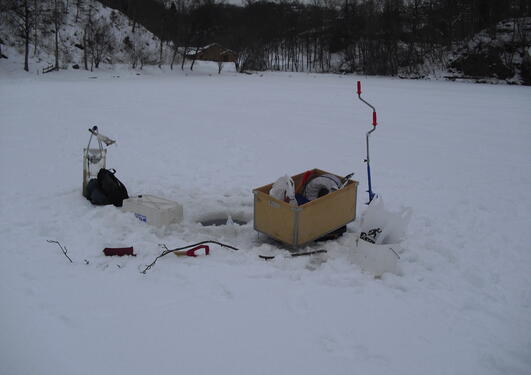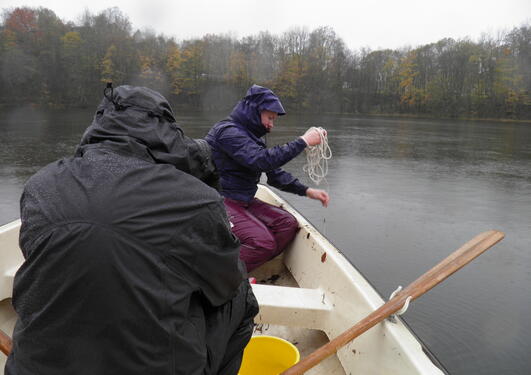Evolution of Daphnia in the wild and in the lab
An introduction of a plankton-eating fish to a previously fish-free lake allows us to see how the planktonic community in general and waterfleas in particular respond to predation.
Main content
Lake Myravatn is a much-studied lake in Bergen that previously hosted no planktivorous fish. However, in around 2007, perch was illegally introduced to the lake. This created a situation which has a clear parallel with commercial fisheries. Before the introduction, the main predator of waterfleas Daphnia pulex were the phantom midge (Chaoborus sp.). They predate mainly upon small-sized daphnids, favouring thus evolution of life-histories that lead to large adult body size. Indeed, Daphnia pulex in Myravatn used to be large. Perch reversed the situation: they preferentially feed upon large daphnids, thus favouring those that reproduce early at small sizes. From the daphnid perspective, the current situation is similar to what commercially harvested fish are experiencing, only this time it the fish that are the culprits.
We are taking advantage of this semi-natural experiment in two main ways. First, we are monitoring the plankton community to see how it responds to the new source of size-dependent predation. Second, we are comparing life histories of Daphnia pulex clones that were collected before and after the introduction.



